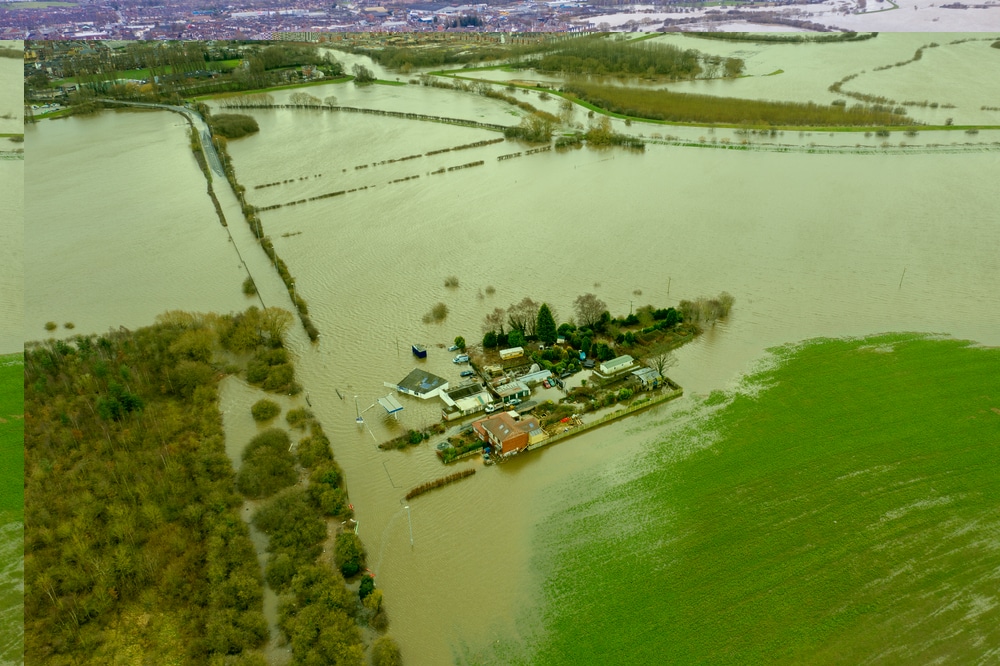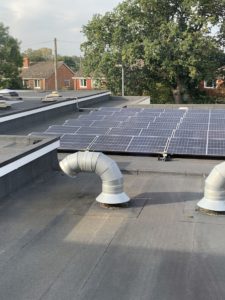How do you prepare your home for the impact of unpredictable weather? Find out in our latest blog.
Summer 2023 in the UK has been an unpredictable rollercoaster of weather, with the delightful sunshine one minute followed by unexpected downpours the next. These fluctuations in weather extend beyond atmospheric shifts – they hold substantial implications for our homes. While we typically brace for such challenges during winter, the unanticipated onslaught of extreme weather during the summer catches us off guard. From health hazards and ecological concerns to financial burdens, the consequences of extreme summer weather cast a wide-reaching shadow. In today’s sustainable construction blog, we’ll delve into the repercussions of extreme weather on your home and provide essential advice on how to mitigate these problems.
The past decade’s records have confirmed that humanity-altered climate change has made it the hottest period in history, with global surface temperature reaching 1.1°c above 1850-1900 in 2011-2020. While common conceptions tie climate change to warmer summers and milder winters, the actuality is far more intricate. Widespread and rapid changes in the atmosphere, ocean, cryosphere, and biosphere have occurred. These climate fluctuations, driven by human activity, have resulted in heightened instances of extreme weather. From prolonged heat waves to rampant flooding, sudden cold snaps to high-velocity winds, these anomalies are rewriting the rules.
As homeowners, recognising and adapting to these shifts becomes pivotal in shielding our homes – substantial investments in their own right. The diverse impacts of extreme weather is not a remote concern; it’s a current reality with profound consequences.
Why is British Weather So Unpredictable?
In recent years, the spectrum of British weather has showcased its extremes. From a remarkable (close to) year-long heatwave stretching between March and October of 2020, to sudden snowstorms in 2021, and the rather damp and dismal summer we’re enduring in 2023, we’ve encountered the full gamut of climatic variations – ranging from biting cold and heavy snowfall to stretches of scorching sunshine.
The recent BBC report on the changing climate’s impact on the UK provided further insight helping us to understand these anomalies. While many might associate climate change with hotter summers and milder winters, the reality stretches over a far broader spectrum. Climate change leads to more frequent and intense extreme weather conditions, with prolonged heat waves, widespread flooding, icy cold snaps and high-speed winds becoming the new norm. Whilst the charm of snowfall is cherished by both children and adults, and the allure of holiday-esque temperature all year round sounds pretty great, there are considerable implications: including on our homes. Whether it’s the chilling cold, the blazing heat, or the persistent rain, how does it affect the structures we live in?
How can extreme weather impact your home?
As a homeowner, understanding these patterns is crucial to safeguarding your property – your most valuable asset. By examining the effects of these weather anomalies, we can arm ourselves with preparation and knowledge, ensuring that our homes remain resilient in the face of such challenges.
Mold and Damp
Mold and dampness are often the first signs of trouble in a home exposed to extreme weather. These issues stem from humidity and moisture, which can find their way into your home through leaks, cracks, and poor ventilation. The impact is far-reaching, from compromising indoor air quality to causing structural damage.
BUILDPASS TOP TIP: Regularly inspect and maintain your home’s exterior, ensuring there are no gaps or leaks that could allow moisture to seep in. For more advice, check out our recent blog on how to assess the moisture risk in your home.
Flooding
As heavy rainfall becomes more frequent, the risk of flooding increases. Floodwater can wreak havoc on your property, damaging foundations, electrical systems, and belongings.
BUILDPASS TOP TIP: Take preventive measures such as elevating electrical outlets and installing flood barriers.
Blocked Drains.
Excessive rain can overwhelm drainage systems, causing water to back up into your home. Blocked drains not only lead to water damage but can also compromise your property’s sanitation.
BUILDPASS TOP TIP: Regularly clear and maintain your drains to prevent such occurrences.
Frozen Pipes.
During severe cold snaps, pipes can freeze and burst, causing extensive water damage. To avoid this, insulate your pipes and keep your heating on at a consistent low temperature when temperatures plummet.
BUILDPASS TOP TIP: Take preventative action before the colder months and if you need help you can have a look at our 10 cost effective ways to heat your home ready for winter.
Subsidence.
Prolonged dry spells followed by heavy rains can cause the soil beneath your property to expand and contract, leading to subsidence – a sinking or shifting of the ground. This can result in cracks in walls, uneven floors, and compromised structural integrity.
BUILDPASS TOP TIP: Regularly water your garden during dry spells to maintain consistent soil moisture levels.
Can Buildpass Help Weather-Proof My Home?
While we can’t control the weather, we can take steps to ensure our homes are well-prepared. Buildpass offers solutions to weather-proof your home, making it more energy-efficient and environmentally sustainable. From insulation upgrades to assessing structural vulnerabilities, our experts can help you fortify your home against the challenges of an increasingly unpredictable climate. Take action now and book a free consultation to protect your investment and create a safe haven amidst the storms.





















